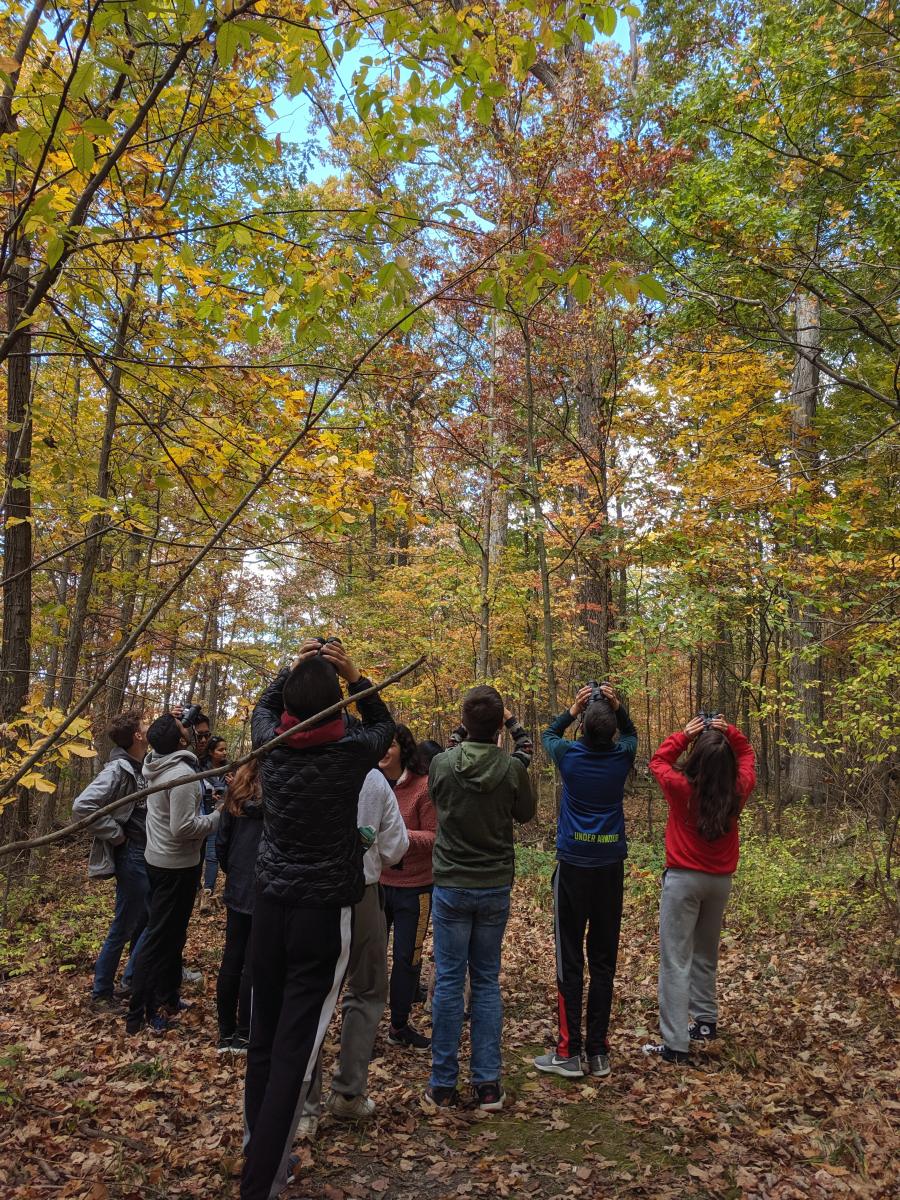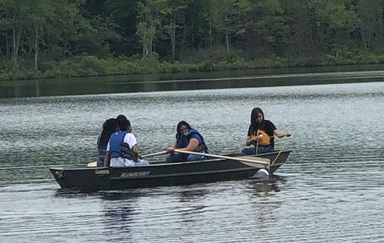Informal STEM Learning at Biological Field Stations
Co-authored by Rhonda Struminger, Jill Zarestky, Rachel A. Short, Lauren Vilen, A. Michelle Lawing.
Introduction
Biological field stations are living laboratories where researchers study topics from animal migration patterns to biodiversity health and, as part of their work, often engage with informal STEM education. The oldest biological field stations (BFSs) have been around for more than 100 years. In the United States today, there are about 400 BFSs dedicated to supporting field scientists in researching a particular place and in educating the general public through their outreach efforts. For the past five years, our interdisciplinary team of social and natural scientists and educators from Texas A&M University and Colorado State University has been working to understand how field stations, long unrecognized as informal learning institutions (ILI), provide STEM learning opportunities to the general public and moreover, how field stations fit into the broader ILI landscape.

An Informal STEM Learning Framework
The team’s first study established BFSs as valuable resources for the public to learn and engage with science while interacting with researchers. A survey of US BFSs led to a 2018 Bioscience paper, “A Framework for Informal STEM Education Outreach at Field Stations.” The paper introduces a framework designed to help field stations focus their education efforts on the learning outcomes of their participants. Leveraging six approaches for learner engagement and six approaches for science learning, the framework centers on place-based activities and programs that delve into a wide variety of STEM topics. The approaches for teaching and learning explore how community, context, and service are integrated into informal outreach programming at BFSs as well as how these programs incorporate activities that are discovery-based, experiential, and/or inquiry-based.
The approaches for science learning are based on the strands of informal science learning identified by the National Research Council in 2009. These strands were identified in ILIs by the Committee on Learning Science in Informal Environments and are intended to be used as a guide for informal educators interested in helping learners develop their attitudes, skills, and dispositions towards science in addition to their core STEM knowledge. Altogether, the six strands serve as a reliable guide for addressing the multidimensional characteristics of science literacy. As such, we leveraged the strands in our framework to help BFSs hone which approaches for learner engagement and science learning best help them meet their outreach goals.
The ILI Landscape
We recognize that place is not only important to field stations – any ILI that has a place-based education orientation can adapt the framework to their situation – and ask how BFSs fit into the ILI landscape. In our most recent paper published in Science Advances, “Spatial inequalities leave micropolitan areas and Indigenous populations underserved by informal STEM learning institutions,” we investigated the spatial inequality in the geographic distribution of ILIs and identified gaps in both expected and surprising places.
Although proximity does not guarantee accessibility, the existence of ILIs in a geographic area suggests that potential visitors live in the vicinity of these venues. To investigate ILI geographic distribution in the US, we considered ILI and population data at the county level and assembled a dataset of more than 20,000 ILIs by type and location. Specifically, we included arboretums, botanical gardens, nature centers, science-oriented museums, zoos, aquariums, wildlife conservation centers, libraries, National Park Service lands and biological field stations and marine laboratories. First, we found that national parks and biological field stations occur in areas with lower densities of ILIs than do other ILI types, such as botanical gardens, museums, and zoos. Second, micropolitan counties with urban clusters of between 10,000 and 50,000 residents have fewer than expected ILIs, and the most underserved counties are in the northwest, Great Plains, and southeast. Third, areas with fewer ILIs have higher than expected populations of American Indian, Alaska Native, Native Hawaiian, and Other Pacific Islander. These Indigenous groups are also significantly underrepresented in STEM careers.
The ILIs that are: 1) in the northwest, Great Plains, and southeast; 2) in micropolitan counties, or 3) in areas with large Indigenous populations should be aware of their important role in serving their local populations. With fewer ILIs to make programming available and accessible, their work is even more essential to educating the public. National parks and BFSs in particular operate in rural areas with lower concentrations of ILIs and could initiate programs to expand their capacity for informal STEM outreach. These are ideal venues to fund for their educational purposes because they promote community-based and place-based education. In addition, these findings suggest partnerships between parks, biological field stations, and community organizations, particularly those focused on Indigenous groups, can be more inclusive of underserved populations in STEM careers and activities.

High school students sampling plankton in Lake Lacawac during an Advanced Aquatic Ecology field trip. Photo by Lacawac Sanctuary.
Research Project Next Steps
This research project, “Informal STEM Learning at Biological Field Stations,” funded by NSF-AISL (NSF-DRL 1713359 & NSF-DRL 1713351), originated from the desire to understand how biological field stations approach educating the general public, the quality of their outreach offerings, and contribution of those efforts to the public’s understanding of science. The funding enabled us to capture these aspects of outreach at field stations. Of U.S. BFSs, 55% (223) responded to our survey, in which respondents profiled 316 informal STEM programs ranging from family science days to nature hikes. We are grateful to the participating BFSs and their personnel who gave their time to contribute to the dataset.
Check out the team’s web site: www.fieldstationoutreach.info
Related Research Papers:
Short, R.A., Struminger, R., Zarestky, J., Pippin, J., Wong, M., Vilen, L. , & Lawing, A.M. 2020. Spatial inequalities leave micropolitan areas and Indigenous populations underserved by informal STEM learning institutions. Science Advances 6(41): eabb381. https://doi.org/10.1126/sciadv.abb3819
Struminger, R., Zarestky, J., Short, R.A., & Lawing, A.M. 2018. Informal STEM learning at biological field stations. Bioscience, 68(12), 969–978. https://doi.org/10.1093/biosci/biy108
Related Readings:
Kerr, J.Q., Hess, D.J., Smith, C.M., & Hadfield, M.G. 2018. Recognizing and reducing barriers to science and math education and STEM careers for Native Hawaiians and Pacific Islanders. CBE—Life Sciences Education, 17(4), mr1.
National Research Council. 2009. Learning Science in Informal Environments: People, Places, and Pursuits. National Academies Press.
Stevens, M.T., & Gilson, G.G.. 2016. An exploration of field-station partnerships: university-operated field stations located in US National Parks. BioScience, 66(8): biw053.
Troxel, G. 2005. Indigenous Knowledge and Informal STEM learning. https://www.informalscience.org/news-views/indigenous-knowledge-and-informal-stem-learning
Zidny, R., Sjöström, J., & Eilks, I. 2020. A multi-perspective reflection on how Indigenous knowledge and related ideas can improve science education for sustainability. Science & Education, 29: 145-185.
AISL has funded some programs on Indigenous Knowledge:
https://www.informalscience.org/native-science-field-centers